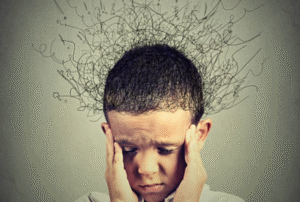What to Do When a Child Is Bullied at School? A Complete Guide for Parents
What can parents do if their child is bullied at school? Discover the signs of bullying, solutions, and how to give emotional support in this guide to safeguard your child and keep them strong.
“1 in 5 children is a victim of school bullying.” What if this is your child – what can be more hurtful for a parent?
Bullying isn’t a typical phase. Bullying can impact the emotional and mental well-being of children in a very deep way. If your child is being ridiculed, excluded, or being physically abused at school, as a parent, you must act on it immediately.
In this article, we will explain at length what you can do when your child is being bullied in school — how to recognize the signs, how to approach teachers, and how to restore your child’s confidence.
Come on, let’s take a firm step towards having a safe, supportive, and bully-free place for your children!
How to Recognize the Signs of Bullying in Your Child
Children don’t necessarily come out and say they are being bullied. Parents, therefore, have to be sensitive to some signs that the child might be going through a tough time.
Behavioral indicators that could indicate bullying
If your child is not behaving the way he used to – for instance, being too naughty, being quiet, or wanting to be alone – then this could be a symptom. He may also not be playing with children or staying away from the family. All these developments in him indicate that he may be emotionally disturbed.
Emotional warning signs: anxiety, nightmares, withdrawal
Bullying has a direct impact on the child’s mental health. If your child is often visibly upset, complains about nothing, or wakes up in the middle of the night with nightmares, these are serious emotional indicators. Some children emotionally shut down once they’re bullied – i.e., they don’t say anything to anyone about their feelings, retreat, and all they do is spend time alone.
Physical indicators: bruises, lost items, or faking illness
If a child repeatedly has bruises or injuries on his body with no explanation, or repeatedly loses his things (lunch box, stationery, or toys) time and time again, then this is also a sign of bullying. Children may make up an illness excuse in order not to go to school – i.e., stomach ache, headache, or nausea – so they wouldn’t have to go to school. Academic indicators: drastic reduction in grades or truancy. Bullying not only impacts emotional or physical well-being but also studies. If your child was performing well in the beginning but now his grades started declining, or he doesn’t want to go to school, feels anxious just hearing the school bus name, then all these are indications that the school environment is not safe for him.
Different Types of Bullying at School 
Verbal Bullying: Name-calling, Teasing, Threats
Verbal bullying is psychologically hurting a child with words. It is name-calling (e.g., “fat“, “smart“, “idiot”), which badly hurts the child’s self-esteem. Teasing is usually repeating belittling words or making fun of someone. Threats are scaring someone, for instance, “If I tell you, take care of me“. All of these may look trivial in school, but are psychologically damaging to the child.
Physical Bullying: Hitting, Pushing, Property Damage
Physical bullying is when a child is physically attacked, like slapping, pushing, or smashing things. Some children will not tell anyone about this kind of bullying because they are afraid. Parents need to see if a child is getting injured repeatedly or if/their clothes/things are being torn over and over again.
Social Bullying: Ostracism, Gossip Spreading
Social or relational bullying is when the child is deliberately left out of the group. For example, not inviting them to a birthday party, not sharing lunch with them, or telling the friends not to talk to them. Rumor spreading is the spreading of false information that ruins the reputation of the child. This is a quiet type of bullying, but very hurtful from the inside.
Cyberbullying: Text Messages, Social Media, Online Gaming
In today’s age of the internet, cyberbullying has become an enormous threat. Here, the kids are targeted by messages on the internet, social media (like Instagram, WhatsApp, Snapchat), or gaming websites. Like turning someone into a meme and sharing it, or sending rude messages, or misusing someone’s photo/video. Cyberbullying can be done 24×7, so it becomes all the more important to track and control it.
First Steps to Take as a Parent
When you find out that your child is being bullied at school, you will automatically feel angry, sad, and stressed. But then the after-effect of your reaction comes upon the child. That is why you should take the first few steps very cautiously.
Stay calm and do not judge – Stay calm and do not judge. When the child describes to you what he has gone through, it is extremely important that you remain calm first. If you are angry or angry, then the child begins blaming himself or remains silent out of fear.
-Make the child believe that you are present with him.
-Employ simple sentences like, “I am here, don’t worry.”
–Don’t cut in; let him get his say.
Let your child talk and tell stories. Let the child talk and tell stories.
Each child responds in their way to bullying. Some become quiet, some become angry, some cry. Don’t stifle his feelings.
-Ask: “How are you feeling?” or “Would you like to tell me what happened?”
-Verify his statement: “Yes, what occurred was wrong.”
-When he opens up, you will realize the real issue.
Let your child know that it is not his fault. Let him know that it is not his fault.
Sometimes children feel that they are going through all this because they are responsible. They feel guilty and ashamed.
-You have to say with firm conviction: “It is not your fault.”
-Inform him the bully is at fault, not him.
-With this assurance, the child ceases to blame himself and feels secure emotionally.
Record what your child says to you (dates, names, locations) – Record what the child says (dates, names, locations)
You need proof to prove the truth of bullying. When the child tells his story, start writing.
-When did it happen? (date & time)
-Who was it? (description or name of the bully)
-Where did it happen? (actual place of school – class, playground, bus, etc.)
-Where was it done or said?
This report will assist school authorities in conducting the investigation and make your complaint more effective.
Working with the School Effectively – How to Work with the School
If your child needs to endure bullying at school, assistance at home will not be enough. It’s very crucial to act in coordination with the teachers and school authorities. Here we will guide you on how you can take firm action in coordination with the school.
1. Who is the first person to meet – Class Teacher, Counselor, or Principal?
Once you know about bullying, first visit the class teacher of your child. The teacher is always aware of your child’s daily life and classroom environment, so he can give you some initial feedback.
If you feel the situation is too serious or that a conversation with your child’s teacher will not be effective, talk to a school counselor. The counselor can help you learn more about your child’s emotional life and friendships.
If the matter is not resolved by these two steps, the matter should be referred to the principal or the head of school. They may act and take into account the school policy.
2. How to present your concerns effectively and professionally?
Be polite and calm when you communicate with school staff. You can become angry, but if you express your issues in a logical, fact-based way, you will be taken more seriously.
-Put down what the child told you, what date and when the event took place.
-If you have evidence, i.e., screenshots (if it’s cyberbullying), photos of damage to property or injuries, post that too.
Instead of turning the discussion into a blame game, make it a solution-oriented one. For example: “I think my child needs help, can we take things step by step?”
3. How to ask for a formal bullying report or investigation?
Unless you determine that informal discussion is not addressing the issue, you can choose to make a complaint.
-Compose a written request to the school indicating in clear words that you seek a formal investigation into the bullying case.
-You may ask the school to investigate the incident under its anti-bullying policy.
-There are some types of grievance redressal mechanisms in some schools — inquire with the school about them.
This kind of formal approach ensures that the problem is dealt with seriously, with documentation.
4. How do you stay interested and follow up?
-After complaining, don’t relax. Call the school frequently, every couple of weeks.
-Ask how much progress has been made in the investigation.
-If anything has been done, what has been accomplished?
-You may also get feedback from a counsellor on how the child is handling their emotions.
Talk to the child regularly about how the school world is going now. This will not only cause you to act once but also continue being involved so that your child is always protected and safe.
How to Support Your Child Emotionally
1. Developing self-esteem with daily affirmations
Using and preserving your child’s self-esteem is important, especially when they are being bullied.
-You can make them repeat brief daily affirmations, such as:
-“I am strong.”
-“I‘m no less than anybody.”
-“I have confidence.”
These affirmations send positive messages to their subconscious mind and gradually build their self-esteem. They can also be repeated in front of them so that they feel their parents behind them.
2. Teaching coping skills: role-playing, journaling, breathing
The psycho-emotional impact of bullying may appear in the child’s mind as anxiety or anger. In this event, it is extremely helpful to teach them some good coping strategies:
Role-playing: You can role-play situations at home, for example, how they would react if someone were being mean to them. This gets them ready mentally for the situation.
Journaling: Have them write down their feelings—what they do or did feel, what happened. Journaling is a healthy way of letting out their feelings.
Deep breathing: Simple breathing techniques, such as inhaling for 4 seconds, hold for 4 seconds, and exhale for 4 seconds help them cope with anxiety.
3. Enabling support groups and social support after bullying,
The child might end up alone and distrust others. Therefore, engaging them in new friends or being in a support group can be therapeutic.
-You can also motivate them to learn a hobby or an activity, such as drawing class, dance, sports, etc.
-Involvement in support groups at school or in the community assists them in realizing that they are not the only ones and that there are people who have the same circumstances.
4. When to seek professional counseling or therapy
If you observe that your child has turned too introverted, cries excessively, is terrified of going to school, or his behavior has all of a sudden changed, these are indicators that he needs expert assistance.
Discussing with a child therapist or counselor makes your child cope with his emotions more effectively.
Therapy is a conducive environment where he can articulate his thoughts freely. We may not necessarily see all of this as parents, so the trained observer’s eye is useful.
Conclusion:
Bullying is never just “kids being kids.” It can have lasting impacts—but with the right steps, you can be your child’s strongest advocate and guide them to safety and strength.
Start by listening, acting, and staying informed. Together, we can ensure that every child feels safe, heard, and supported at school and beyond.
If this guide helped you, consider sharing it with another parent who might need it. No child should face bullying alone.


